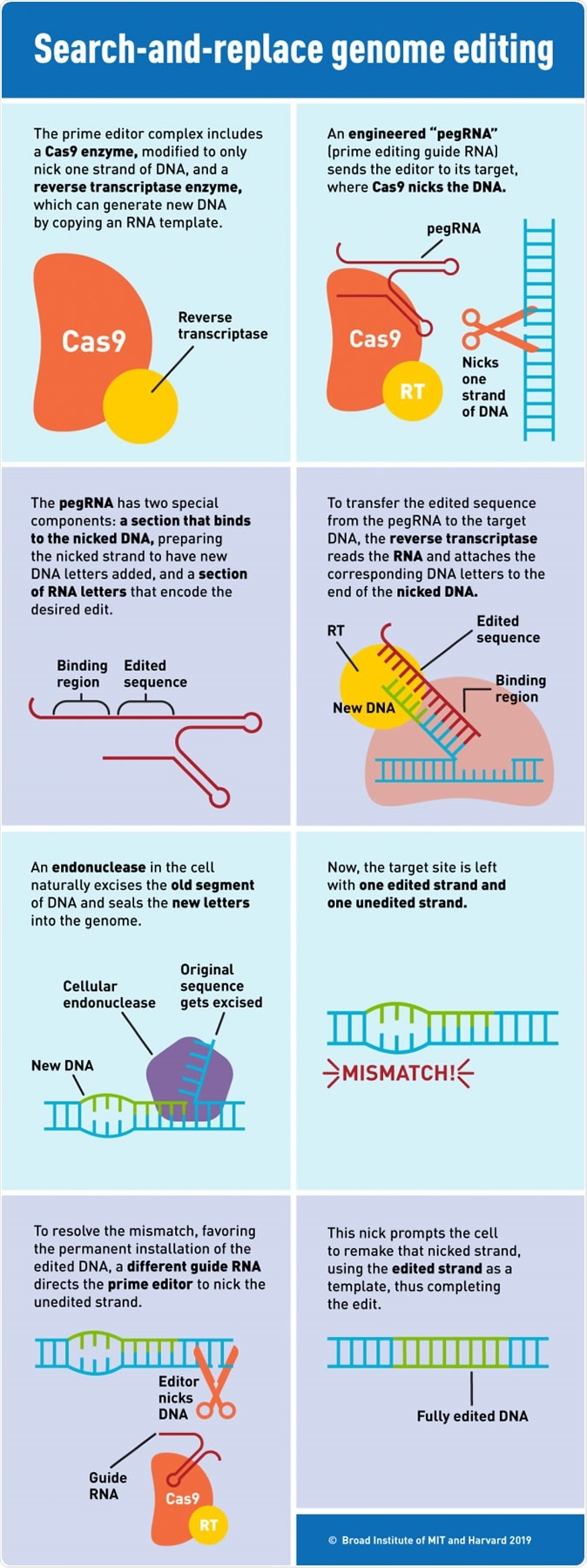Gene editing to correct genetic faults and removing the risk of hereditary diseases may soon become reality. Researchers have come up with a new gene editing technology that could help patients with sickle cell anaemia and up 89 percent of other genetic defects. This new technique is called the “prime editing” and is being developed and modified by a team at the Broad Institute of MIT and Harvard. The results of their initial findings have been published in a study in the journal Nature this week.
The researchers explain that CRISP gene editing was and still is one of the most powerful gene editing tools that is available today. Experts have been working with the CRISPR-cas9 technique where the cas9 is a protein that is like a pair of scissors that cuts out the specified genetic location in the DNA strands and disrupts a mutation or alteration. This makes it a great choice for genetic diseases that result due to single point mutation where the technique can act. Two thirds of the genetic disorders are known to be caused by single point genetic mutation, the paper explains. CRISPR-cas9 was first used in 2016 and since then has been found to be useful in several studies and experiments.

The prime editing builds up on the CRISPR editing technique. It is more versatile and can be more accurate. The paper says the prime editing, “directly writes new genetic information into a specified DNA site” accurately. In this type of editing, there is a different cutting protein that combined cas9 and reverse transcriptase, that can also generate new strands of DNA and not only cut out the offending areas. Using this technique the team showed that they could cut out a mutated sequence of DNA strand and replace it with an edited strand at the target location. This means deletion and insertion within human genome has become easier, explained the researchers. The inserted strands have no risk of breaking and entire sections could be altered using this technique, they wrote. This also means that 89 percent of the diseases caused by genetic variation could be treated using this technique, they wrote.
David Liu, author of the study, in a Broad Institute press release said in a statement, “With prime editing, we can now directly correct the sickle-cell anemia mutation back to the normal sequence and remove the four extra DNA bases that cause Tay Sachs disease, without cutting DNA entirely or needing DNA templates.” Andrew Anzalone, another author added, “The versatility of prime editing quickly became apparent as we developed this technology. The fact that we could directly copy new genetic information into a target site was a revelation. We were really excited.” Liu is the head of the lab where Anzalone and others worked at developing the prime editing technique. “Prime editors are more like word processors capable of searching for targeted DNA sequences and precisely replacing them with edited DNA strands.” Liu said.
As a next step the team is working on perfecting their technique so as to work on all types of cells and are also exploring the potential uses for their technique. Different models of the diseases would be explored to see the potential uses of this technique say the researchers. They are looking for therapeutic applications for their new technique, they explained. They have tried 175 different gene edits with their technique and have been successful in altering the genetic sequences for Sickle cell anaemia and Tay Sach’s disease write the researchers.
“Prime editing is really a step - and potentially a significant step - towards this long-term aspiration of the field in which we are trying to be able to make just about any kind of DNA change that anyone wants at just about any site in the human genome,” Liu said.
The researchers and other experts opine that gene editing is a rapidly developing field of study and would soon be the answer to removal of the mutated and offensive genes to help humans avoid diseases such as genetic deafness, Alzheimer’s disease, neurodevelopmental disorders, Parkinson’s disease, Huntington’s disease and even heart disease and obesity. There are however ethical issues that bind the gene editing technology advances. Nontherapeutic manipulation of the human embryos could lead to maybe better looking humans but may also lead to unintended mutations and new diseases and health concerns, researchers believe.
Stories of ethical concerns with indiscriminate gene editing have emerged over the past few months with the last by Chinese scientist He Jiankui who used the gene editing technique on human embryos and claims to have created two babies who would be resistant to getting HIV infection and AIDS. His research has been condemned as unethical and “abominable” by Chinese as well as International scientific forums.
CRISPR: Gene editing and beyond
CRISPR: Gene editing and beyond
Source:
Journal reference:
Search-and-replace genome editing without double-strand breaks or donor DNA, Andrew V. Anzalone, Peyton B. Randolph, Jessie R. Davis, Alexander A. Sousa, Luke W. Koblan, Jonathan M. Levy, Peter J. Chen, Christopher Wilson, Gregory A. Newby, Aditya Raguram & David R. Liu, https://www.nature.com/articles/s41586-019-1711-4